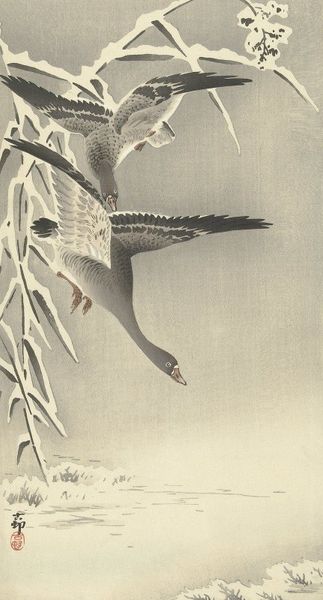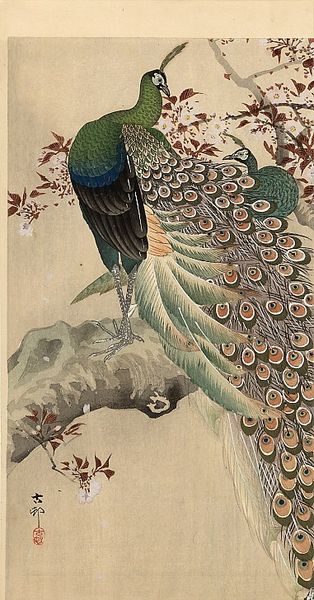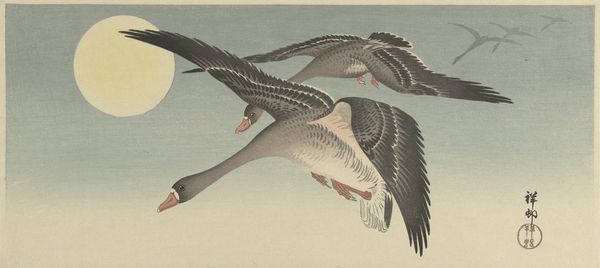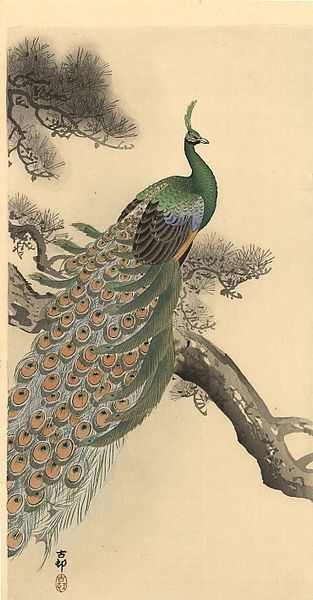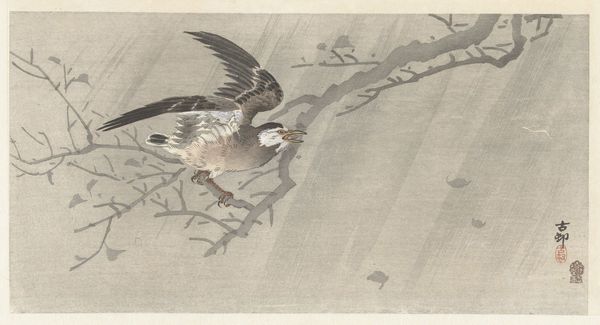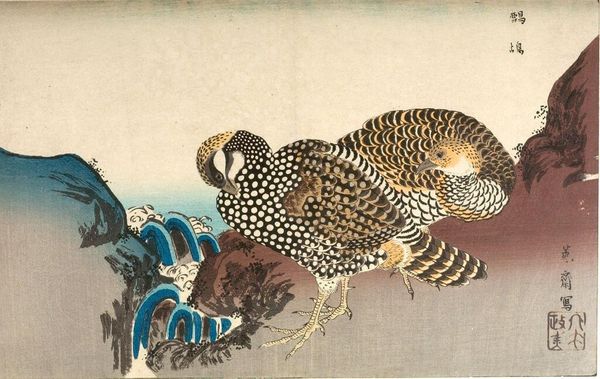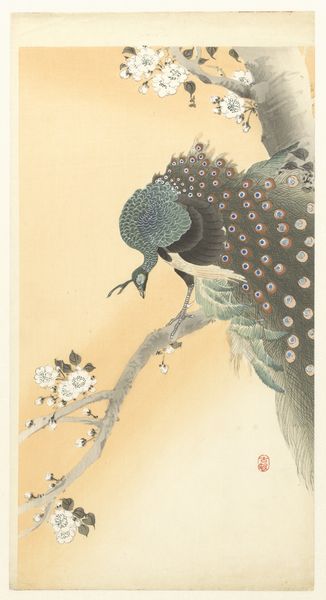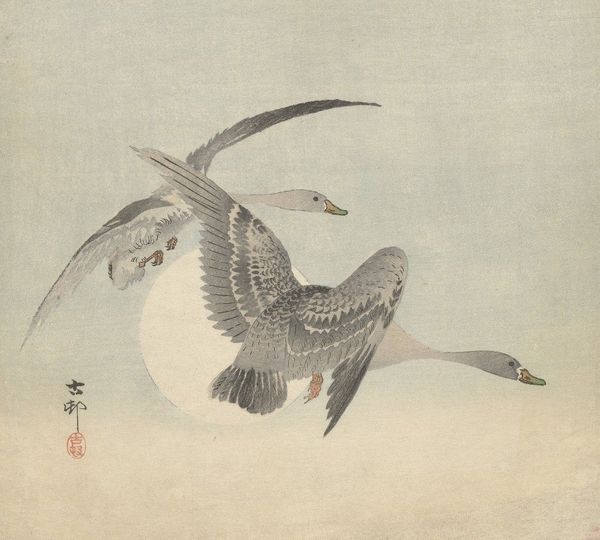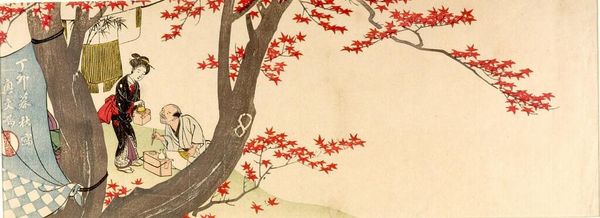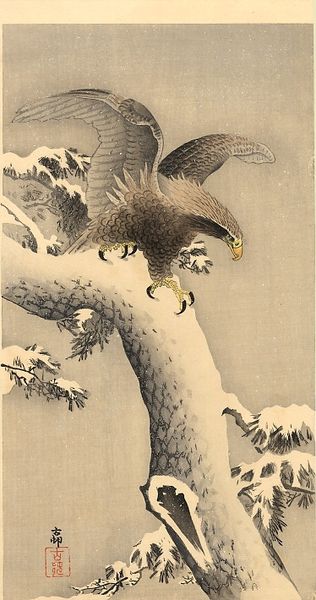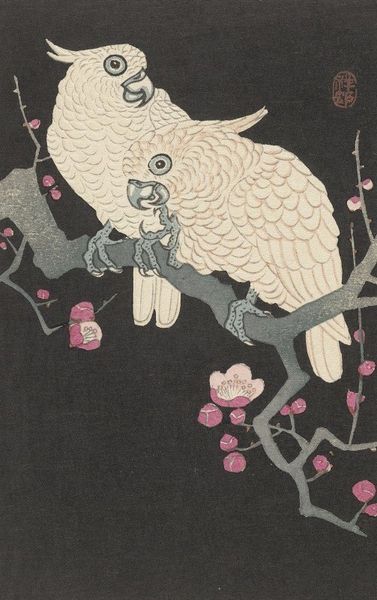
Copyright: Public Domain: Artvee
Ohara Koson made this woodblock print of two peacocks on a branch during the early twentieth century. Koson was part of the Shin-Hanga movement. Shin-Hanga revived traditional Japanese art, which had waned with the rise of Western art. Woodblock prints such as this one were made for export, catering to Western tastes. These prints reveal a nostalgic view of Japan, focusing on 'traditional' subjects such as birds and flowers. The peacocks themselves, of course, are symbols of beauty, pride, and status. This print emerged in a period of rapid social and political change in Japan. The Meiji Restoration of 1868 opened Japan to foreign influence, while also strengthening a sense of national identity. Koson's work is a product of that era, balancing tradition and modernity, local and global. To fully appreciate the artistic balancing act that is on display, historians might consult period publications, export records, and collections of Japanese art. The meaning of art always depends on the social and institutional context.
Comments
No comments
Be the first to comment and join the conversation on the ultimate creative platform.
